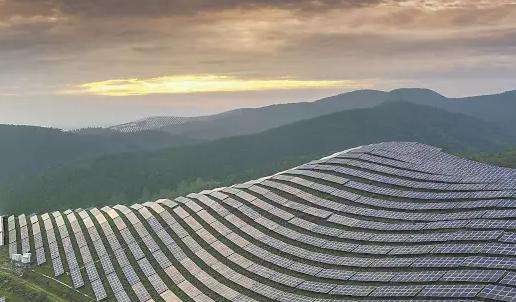With the rapid development of the photovoltaic industry, photovoltaic operation and maintenance also faces enormous challenges. The infrared thermal camera is an indispensable tool in the intelligent inspection process of photovoltaic power plants. Photovoltaic power plants are usually located in remote areas and cover a large area. The traditional manual inspection method requires inspectors to inspect each PV panel on foot, which is difficult, inefficient and dangerous.
The infrared thermal camera is an important part of the intelligent inspection solution. The drone is equipped with an infrared thermal imager, which can inspect solar panels over a wide area in a short time without being limited by terrain, and quickly discover common defects and hidden dangers such as hot spots, cracks and occlusions in photoflight centerstaic. to carry out inspection, improve inspection efficiency and reduce the risk of inspection work.
Can solar power produce electricity at night? Recently, Australian scientists are trying to make solar panels useful at night through the so-called “radiative cooling” mechanism, hoping to eventually be able to use a tenth of the solar panels' power during the day.
Solar panels have potential at night. Ekins-Daukes, associate professor at the School of Solar and Renewable Energy Engineering at the University of New South Wales (UNSW) in Australia, pointed out that during the day. , sunlight hits the ground and warms the surface at night, the surface will radiate the same amount of energy into space.
When it comes to meteorology, this is something called radiative cooling. Solar thermal energy absorbede from the Earth's surface will emit long-wave radiation toward the sky at night if the weather is clear. windy and dry at night, the surface temperature will cool quickly, leading to a sudden drop to low temperatures. The UNSW team believes that if we can convert the radiation flow into electricity using batteries, there is a huge amount of unused potential energy that can be harnessed.
After all, Australia is one of the largest users of rooftop solar in the world. The number of customers with solar panels has soared to more than 3 million since 2001, with a record of more than 3 GW of solar on the roofs of Australian homes in 2021.
But first , Ekins-Daukes stressed that “nighttime solar” technology is still in its infancy. The study proved its feasibility, but the electricity production is still very low, equivalent to 1/100,000 of the energyordinary solar. At a temperature difference of 12.5°C, the power density is 2.26 mW per square meter and the radiation efficiency is 1.8%.
(Source: University of New South Wales)
The traditional structure of solar cells is essentially composed of a combination of P and N. -type semiconductors. This structure is called a PN junction. When a semiconductor absorbs sunlight, a face-to-face electron-hole pair is generated between the PNs, which are stimulated by the built-in electric field. The electrons and holes that have lost the electrons will move in different directions opposite, thus generating current and voltage. The region near the junction will form a region without mobile operators, called a depletion region.
The device developed by the team is called a thermoradiative diode. It works basically the opposite of che of a solar cell, absorbing and radiating upwards from the earth's (or other) surface. heat sources). Thermal energy is converted into electrical energy and the material is similar to infrared night vision goggles.
Michael Nielsen, senior lecturer at the School of Solar and Renewable Energy Engineering at the University of New South Wales, noted that the function of thermal radiation diodes is in fact opposite to that of thermal radiation diodes. that of traditional solar cells, but the world of PN semiconductors is still a device whose core simply works in reverse. Ekins-Daukes said one of the challenges with thermal diodes being low power today is detecting them, but theory suggests the technology could eventually have the potential to produce about 1/10 the power of cells solar.














